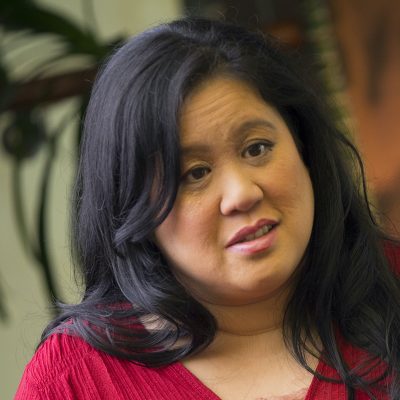3-4 Explaining your Potential Impact
Sarrah Lal and Teresa Chan
Overview
Have you ever tried to explain your work to someone outside of your field and been met with a blank stare? Perhaps even worse – a shrug? Sure, we can say that the interpretation of impact is highly subjective. “They just don’t understand”, we can say. But what if we could increase the effectiveness of our communication efforts to achieve broader understanding of our work, even outside of academia?
As researchers, it is our responsibility to ensure that new knowledge is created and then mobilized to create tangible value. Let’s spend some time to think beyond research publications that are only read by individuals in our fields. Let’s unlock the full impact potential of your work by reaching new audiences. In this chapter we will explore the use of social media, technology transfer, non-academic publications, videos, and infographics to level-up our research efforts. By the end of this chapter, you will better understand your audience(s), types of knowledge mobilization efforts, and how to measure the effectiveness of your impact generating efforts.
Key Points of the Chapter
By the end of this chapter you will:
- Identify & articulate your target audience(s).
- Categorize types of knowledge mobilization techniques (social media, academic or non-academic publication, technology transfer, videos, infographics, etc.) and compare/contrast their potential impact for different audiences.
- Use associative thinking to identify audiences that may benefit, directly or indirectly, from your research.
- Describe how to find relevant comparators.
- Develop a plan for measuring impact from knowledge mobilization efforts.
Vignette
Nkosa stared at her grant proposal feedback from last year. She had been ranked 5 out of 11 grants submitted last year for a local education grant. The chair had encouraged her to consider revising and resubmitting for this year’s competition, highlighting that her team had just placed a few points lower than the three top ranked projects. Dr. Jeong had hinted that perhaps if she could strengthen their impact statement and really focus on making the project more relevant to the frontline faculty members that their team might be more successful this year.
Upon reviewing the grant feedback, Nkosa noted that Reviewer 2 for her grant had really given her a hard time about her impact statement. This reviewer’s comment had been copied-and-pasted directly into the grant feedback (completely unfiltered), and the statement was straight out of the academic meme:
“Quite frankly, I don’t understand the relevance of this project. As a frontline clinician educator, I think that this project is far too academic and is completely divorced from the realities of medical education on the frontlines.”
Wincing as she read this again, Nkosa sighed. How was she going to take this feedback and reframe her grant this year?
Deeper Dive into this Concept
When doing research, it is important to explain the impact you think you research would have. In both granting and writing (1), the two most important questions you must answer as a researcher are:
- So What?
- Who Cares?
Getting to the core of these two statements are crucially important for determining how you will get your research to go beyond simply being a paper that is published, but never read or used.
We suggest that there are 4 key steps to being able to articulate the impact of your research to your readers. Whether you are creating a research proposal, grant, study protocol, or manuscript, these four steps can be super valuable to you:
Step 1: Determine and articulate your audience
Step 2: Map out all of your stakeholders
Step 3: Identify how your stakeholders will use the new knowledge generated by your project
Step 4: Find some role models
Step 1: Determine and articulate your audience
Considering who will care about your research findings is certainly a great first step for thinking through the impact of your work. There are numerous strategies that one can use to engage in the elaborative thinking that it takes to analyze all the angles. Here is an activity that might get you started in thinking about who your audience might eventually be:
Exercise – 99 use cases
This activity is best done as a group activity, so gather up your co-authors and give it a try!
It is derivative of an exercise that they sometimes use in business schools to facilitate brainstorming around new business models. With your research team, try to generate 99 uses for the findings of your study (whether they are just hypotheses now or actual results). 99 uses sounds like a lot, we know, and likely you will find it difficult to get started – but try not to restrict yourself and let your creativity flow.
Think about big uses (systems wide) and smaller uses (in a 1:1 encounter between teacher and student). Think about how groups of individuals might use your knowledge. At the end of your brainstorming session, look across the 99 use cases and try to identify the people that were at the centre of these uses. This will be your knowledge user list, and they are certainly a key target audience for your messaging and writing going forward.
Step 2: Map out all your stakeholders
Once you have a master list of all the possible audience members, now it’s time to think through how these stakeholders might interact with each other, and how they might have shared needs.
Exercise – Mapping activity
Mind mapping can be a valuable tool to communicate but also to learn insights about how you are thinking about a topic. You may have used mind mapping for elaborative exercises as a trainee or learner (e.g. mapping out how the endocrine system works), but now we would suggest that you take a few minutes to try to map out what groups of individuals might interact with your study findings in the end.
Identify your potential readers & knowledge users: Try to think about each type of person who might read and interact with your findings – think about a teacher, for instance. This type of mapping allows you to identify people that may benefit, directly or indirectly, from your research.
Think upstream & downstream of this initial users: Who might that teacher interact with upstream (e.g. who might have taught them about your project and its findings.) or downstream (e.g. learners, other teachers, administrators). How might each stakeholder have acquired this knowledge via social media, faculty development, conference workshop? For each new person that appears within this web, do the same thing (who is upstream or downstream to that person)?
Step 3: Identify how your stakeholders will use the new knowledge generated by your project
This step will help you answer the “So What?” question that was asked earlier. Use the stakeholder list you’ve generated to think through the following set of questions:
- What will people do differently if they know about your project?
- How could you convince them to change their actions?
What will be the benefit to them if they change their practice? One hint for how you can think through these questions would be to find people who are your potential stakeholders or audience members and ask them! Some scientists even write budget line items to engage in focus groups with knowledge users and stakeholders to better understand how these individuals will use their new scientific findings or work. If you don’t have the budget for this, consider just finding a few people in your network and asking them what they think about your findings. Many scholars will do this at national conferences or using social media. Engaging with your stakeholders will help you to find your blind spots – so consider diversifying the types of people you ask. Another hint would be to go back to your 99 use cases brainstorming activity to see if these actually resonate with your end users and stakeholders.
Step 4: Find some role models
Another method that you can use to inspire you to understand how others will engage with your work will be to find relevant role models or comparators and analyze how they accomplished the feat of convincing others to change their practice. This “competitive analysis” can be very useful as it will often highlight new ideas that you haven’t thought of before. Sometimes the competitive analysis will be simply to ask around in your community of scholars for someone who has done a similar project and ask for advice.
Other times this may involve some level of literature review to determine how others have engaged in this before. There may also be avenues to explore Faculty Development offerings (see suggested resources below and in the references) to up your game with regards to scholarly dissemination, knowledge translation, and end-of-grant implementation strategies. To be honest, some scholars even ask openly on social media for advice on how to best engage in certain practices. The following resource provides some advice for those developing their academic brand:
Finally, getting involved in your institutional review board, ethics board, or grant review panels may give you great insights and help you to find examples of others who consistently identify, articulate, and then speak to the importance and potential impact of their work.
Key Takeaways
In summary, when explaining the potential impact of your work, you should consider the following:
- Think about all your possible stakeholders – Use elaborative techniques (such as mindmapping or brainstorming) to think about all the people that might be impacted by your work. Think both proximally (i.e. those who immediately would take your study findings and run with them) and distally (e.g. someone who might eventually be impacted by the work).
- Know your audience(s) – Knowing who would be a potential audience for the paper or grant will be key. If you are writing a grant, then this usually means you are writing to established reviewers and contributors to the field who know the landscape. If you are writing a paper, your editors, reviewers, and readers will ultimately want to know how your work is relevant to them. Make sure you build off of the work set forth by others, but also review the literature for controversies and dilemmas that you might want to highlight to show that you are well-versed on the field’s conversations.
- Consider consulting others to help you identify your blind spots – Diversifying your grant or paper team can help you to identify your blind spots in how your work may impact the field (both positively and negatively). Building out a strong group of collaborators to engage in shared.
References
- Bordage G, Dawson B. Experimental study design and grant writing in eight steps and 28 questions. Medical education. 2003 Apr;37(4):376-85.
- Varpio L. Using rhetorical appeals to credibility, logic, and emotions to increase your persuasiveness. Perspectives on medical education. 2018 Jun;7(3):207-10.



